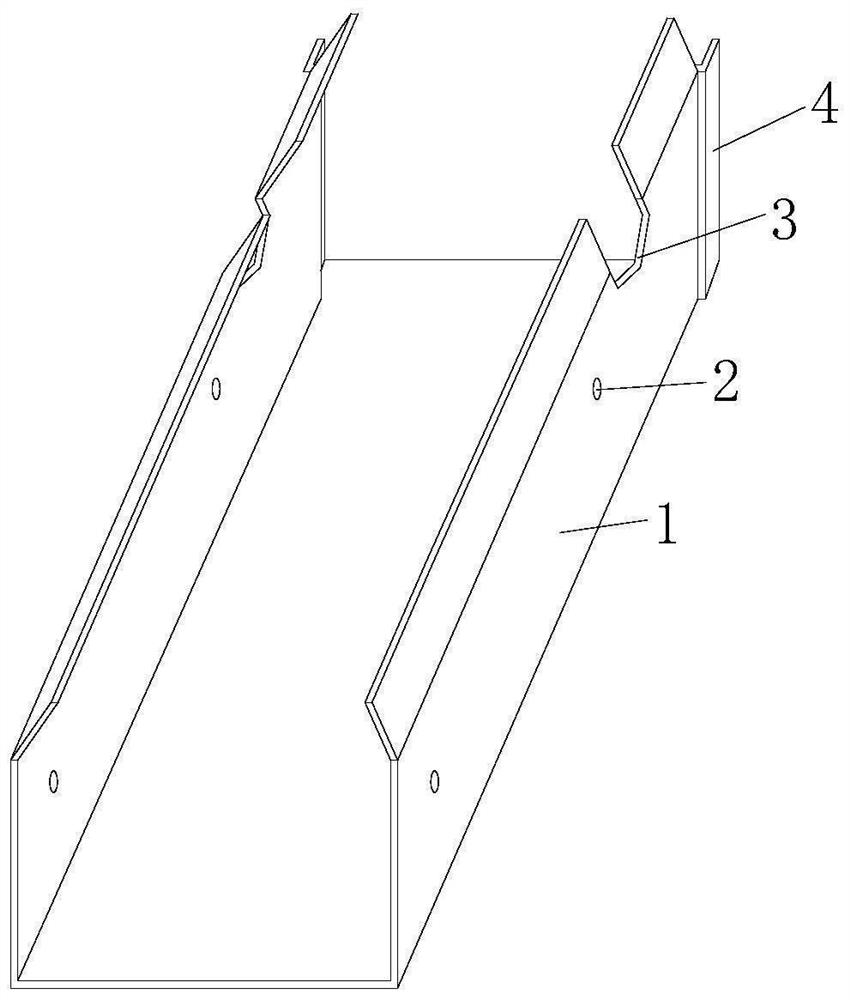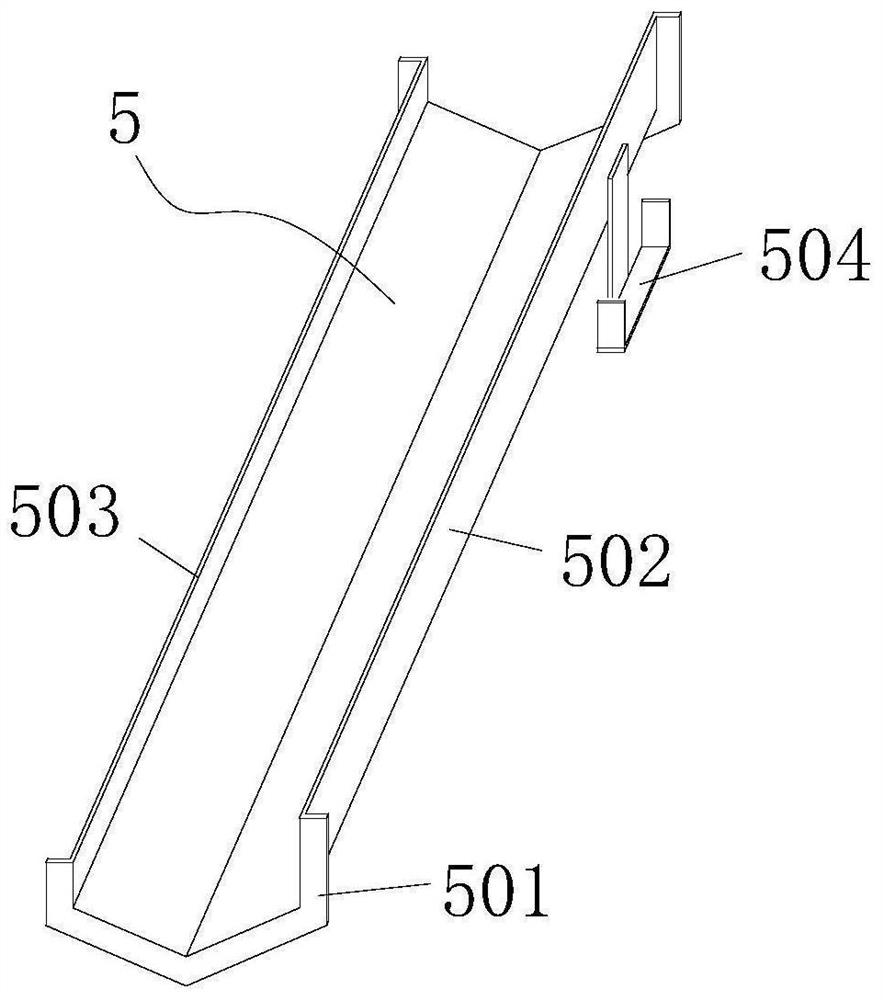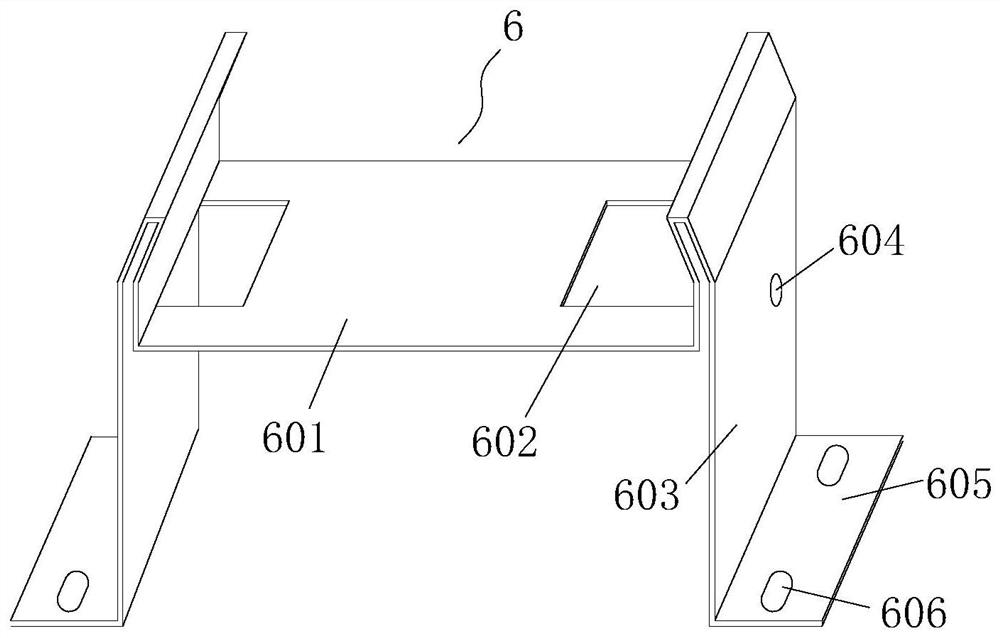[0007] (1) When the traditional waterproof photovoltaic support is fixed to the C-shaped steel beam on the roof, it is mainly fixed by self-tapping holes. When fixing the self-tapping holes, workers need to stand on the top of the C-shaped steel beam and use a hand
drill to continuously apply force downwards. The self-tapping thread breaks through the waterproof bracket and then drives into the C-shaped steel beam. This process is likely to cause a high-altitude
fall accident[0008] (2) After the self-tapping thread breaks through the waterproof photovoltaic support, if the force of the hand electric
drill is not well controlled before the C-shaped steel beam is penetrated, it is easy to cause displacement of the waterproof photovoltaic support that has been positioned, and eventually the waterproof photovoltaic support is actually damaged. Error in installation
[0009] (3) Since the self-tapping thread pierces the waterproof photovoltaic support, there is a hidden danger of
water leakage in the later stage of the pierced position
[0010] (4) Using self-tapping screws to fix the waterproof photovoltaic support has potential safety hazards
The steel structure roof has a large
temperature difference between winter and summer, day and night, and the structural
adhesive will age after a long time, and there will be gaps in the seal of the structural
adhesive, which is easy to seep
If the connecting piece is loose, it is easy to cause
water leakageThe structural design also has the disadvantages of high material cost, complex structure, low installation efficiency and high construction cost
[0012] (6) The horizontal water guide channel of the traditional waterproof photovoltaic support generally adopts a rectangular design and is placed flat above the longitudinal water guide channel. This design is likely to cause the vertical water guide channel to move up and down
Because the roof of the steel structure factory building has a certain angle, the upper
vertical edge of the horizontal water guide channel after installation is higher than the lower
vertical edge. When the rainwater flow is large, the capacity will cause rainwater to overflow from the lower
vertical edge of the horizontal water guide channel.
[0013] (7) The traditional waterproof photovoltaic support adopts a rectangular horizontal water guide groove and lays the photovoltaic power generation module on the top of the vertical water guide groove, so that the lower frame of the upper photovoltaic power generation module and the upper frame of the lower photovoltaic power generation module There is a gap between them, which will increase the inflow of rainwater in the horizontal gutter, which may easily cause rainwater to overflow from the lower vertical edge of the horizontal gutter. If the gap is too large, debris will fall into the horizontal gutter and affect drainage The flow rate will also cause rainwater to overflow from the lower vertical edge of the horizontal water guide groove; in order to solve the excessive gap between the upper and lower photovoltaic power generation modules, the traditional waterproof photovoltaic support is generally sealed with structural rubber strips or T-shaped structure of aluminum
Alloy strip sealing pressure, the above two solutions will cause waste of materials, increase the difficulty of construction, and increase the difficulty of disassembly and maintenance of photovoltaic power generation modules in the later stage
[0014] (8) After the traditional waterproof photovoltaic support is fixed, the photovoltaic power generation components are laid. After the photovoltaic power generation components are laid, they are fixed with aluminum alloy side pressure blocks, aluminum alloy middle pressure blocks, screws and nuts. During the process of briquetting and aluminum alloy edge briquetting, workers are likely to trample or press the photovoltaic power generation components; if some photovoltaic power generation components need to be replaced later, workers are also likely to trample or press the surrounding photovoltaic power generation components during the removal and replacement process. Power generation components,
trampling or pressing on the surface of photovoltaic power generation components will cause cracks in the cells inside the photovoltaic power generation components, which will directly affect the service life and power generation of photovoltaic power generation components
[0015] (9) Each aluminum alloy side briquetting block, aluminum alloy middle briquetting block, screw, and nut needs to be assembled at the construction site, resulting in increased construction work on site, and the loss of small parts such as screws and nuts is prone to occur during the
assembly process. Affect the overall construction progress
[0016] (10) After the traditional waterproof photovoltaic support and photovoltaic power generation components are installed, the photovoltaic cables of the photovoltaic
junction box on the back of the photovoltaic power generation Security risks
[0017] (11) After the traditional waterproof photovoltaic support is fixed, the photovoltaic power generation components are laid, because the traditional waterproof photovoltaic support uses aluminum alloy middle pressure blocks to fix the photovoltaic power generation components on the left and right sides, and because of the size of the aluminum alloy middle pressure blocks, resulting in After the photovoltaic power generation modules on the left and right sides are fixed, there will be a gap of about 2 to 3 cm. Because the gap between the photovoltaic power generation modules and the modules is too large, the flow of rainwater in the longitudinal gutter will increase. When the amount of rainwater is too large, it will easily cause Rainwater overflows the vertical gutter; at the same time, because the gap between the photovoltaic power generation modules is too large, the roof resources are wasted, the
usable area of the roof is greatly reduced, and the installed capacity of the roof photovoltaic power generation Excessive gaps will cause sundries to fall into the longitudinal gutter, forming a blockage and affecting the drainage effect
 Login to View More
Login to View More  Login to View More
Login to View More 


